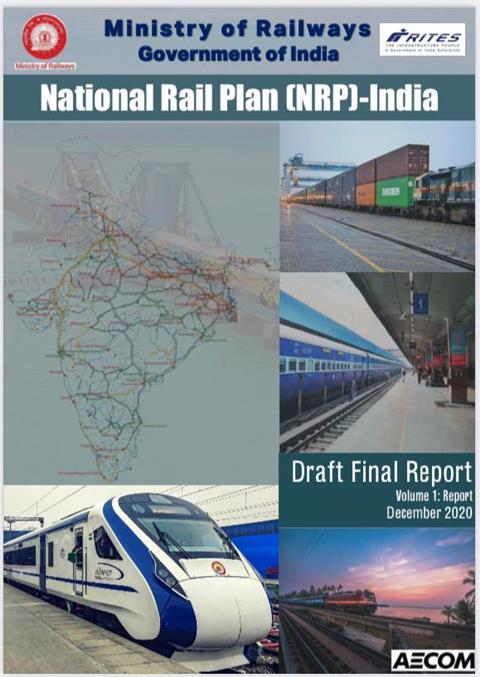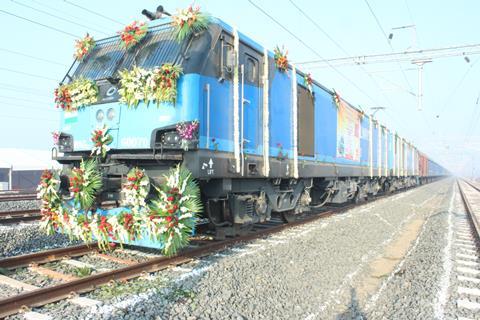
INDIA: The Ministry of Railways has begun consultation on its National Rail Plan, intended to shape the evolution of Indian Railways up to 2050.
The 30-year plan envisages a total investment of more than Rs38tr across infrastructure and rolling stock, in order to boost rail’s market share significantly and contribute to meeting the country’s climate change mitigation targets.
The plan has been developed over the past two years by AECOM India under contract to Rail India Technical & Economic Services, and the draft final report was circulated to selected stakeholders on December 18.
As part of the project the entire IR network has been digitally mapped on a GIS platform, using remote sensing software. These geo-referenced maps provide the basis for various overlays to illustrate core themes in the overall strategy.

The main recommendations include:
- creation of additional capacity to cater for projected demand growth to 2030 and 2050;
- increasing IR’s share of the national freight market from 26% in 2017-18 to 45% by 2050;
- increasing passenger traffic from 8 439 million passenger-journeys in 2018-19 to 9 448 million in 2021 and 12 164 million by 2030-31;
- ensuring net zero carbon emissions by 2030.
The projected increase in freight traffic envisages originating tonnage rising from to 1 208 million tonnes in 2019-20 to 3 167 million in 2030-31 and 4 464 million tonnes by 2050, and from 670 billion net tonne-km in 2019-20 to 2 137 billion within the first decade.
This represents a 9% cumulative annual growth rate in terms of tonnage and more than 11% in tonne-km. By comparison, passenger journeys are only forecast to rise by an average of 4% per year.
The freight growth scenario is predicated on a substantial reduction in transit times, thanks to a gradual increase in the average speed of freight trains from 22 km/h to 50 km/h, together with a 30% reduction in freight tariffs by 2050 to lower the overall cost of transport.
Infrastructure investment
In terms of infrastructure to support these significant increases in traffic, the National Rail Plan envisages that IR will complete 100% electrification of its existing broad gauge network by 2023.
Upgrading works will enable the operation of 160 km/h passenger-services on the Delhi – Howrah and Delhi – Mumbai corridors and 130 km/h on the other four corridors in the Golden Quadilateral & Diagonals. All level crossings would be abolished on these routes.

New line projects envisage the construction of high speed rail corridors totalling 2 521 route-km at an estimated cost of Rs5 042bn. Another Rs1 517·2bn would be spent on further Dedicated Freight Corridors totalling 3 793 route-km to be built during 2026-31.
The total investment required for all infrastructure works, terminals and rolling stock over the entire 30 year plan period is estimated at Rs38 205·2bn. Of this, around Rs5 818·2bn would be spent in 2021-26, Rs9 155·3bn in the following five years, Rs9 345·bn during 2031-41 and Rs13 886·1bn in 2041-51.
The proposals envisage sustained private sector involvement in areas such as the procurement, ownership and operation of rolling stock, the development of freight and passenger terminals and in major infrastructure projects.
The draft report predicts that after 2030 IR would be generating a revenue surplus sufficient to finance its future capital investments, as well as servicing the debts on any capital already invested. As such, the funding of rail projects from the national exchequer would not be required.

















